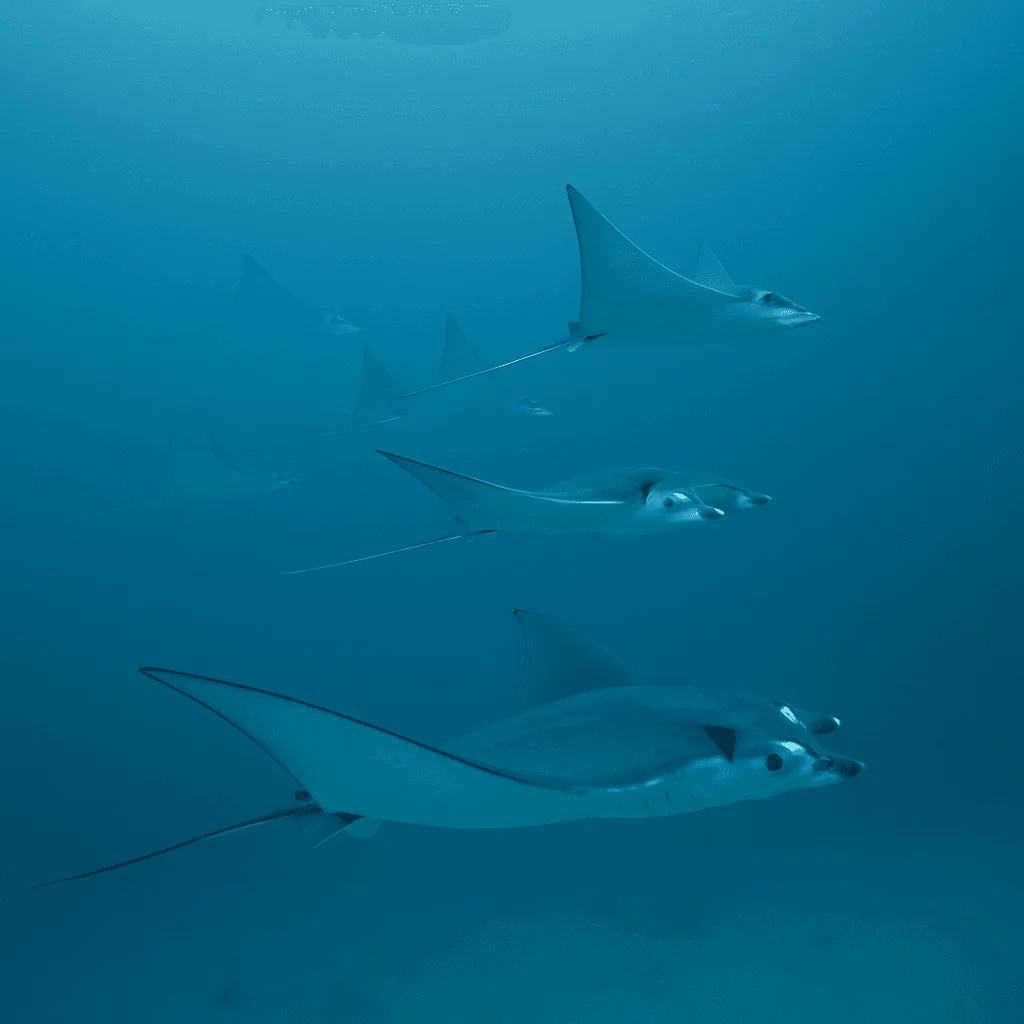Scuba Diving in Pulau Weh
The Ultimate Guide
Pulau Weh lies off the northern tip of Sumatra where the Andaman Sea meets the Indian Ocean. This volcanic island may be small, but its surrounding waters are packed with life thanks to nutrient‑rich currents funnelling through the deep channels. Rugged pinnacles, canyons and seamounts provide habitat for bluefin trevallies, giant trevallies, schooling barracudas and jacks, as well as whitetip and occasional blacktip reef sharks. Macro lovers will find octopus, mantis shrimp and a rainbow of nudibranchs. With affordable dive packages, a friendly local vibe and minimal crowds, Pulau Weh offers thrilling drift dives and calm reefs suitable for all levels.
Difficulty
Moderate
Temperature
27-30°C
Visibility
15-30m

Diving Highlights
Best Months to Dive
Getting to Pulau Weh for Diving
✈️Transportation
To reach Pulau Weh, fly into Banda Aceh on mainland Sumatra (Sultan Iskandar Muda International Airport) from Jakarta, Kuala Lumpur or Medan.
From the airport a short taxi ride takes you to Ulee Lheue ferry terminal where fast ferries depart several times daily for Balohan Harbour on Pulau Weh (about 45 minutes).
From Balohan it’s a 20‑ to 30‑minute taxi or ojek ride to the main dive villages of Iboih and Gapang. A small airport near Sabang offers limited flights from Medan.
Most dive centres can arrange transfers and accommodation packages.
Country
Indonesia
Currency
Indonesian Rupiah
Electricity
220V, 50Hz, Euro Plug
Cost of a Dive Trip in Pulau Weh
Day Trip
Dive Resort
Meal
Accommodation
Best Dive Sites in Pulau Weh
🐠Batee Tokong
An offshore pinnacle that rises from deep water to within 12 m of the surface. Strong currents attract swirling schools of barracudas, jacks and trevallies, while whitetip reef sharks patrol the slopes. The reef top is covered in hard corals and frequented by turtles and bumphead parrotfish.
🐢The Canyon
A deep canyon with steep walls and swim‑throughs located near Pantee Peunateung. Descend to 25–35 m and ride the current through the chasm, watching huge trevallies, snappers and barracudas feed in the blue. Macro sightings include leaf scorpionfish and ornate ghost pipefish clinging to sea whips.
🦈Sabang Wreck (Sophie Rickmers)
A 134 m German cargo ship scuttled in 1940 lies upright at 50–55 m. Only suitable for technical divers, the wreck is draped in giant black corals and gorgonians and home to schools of batfish and snapper. Penetration reveals engine rooms and cargo holds frozen in time.
🐙Pantee Peunateung (Shark Plateau)
A broad plateau sloping from 15 m to over 30 m, covered with corals and large barrel sponges. Schools of snapper, sweetlips and trevally hover over the reef, and whitetip and blacktip reef sharks cruise the drop‑offs. On calmer days this site is accessible to all levels.
🐚Rubiah Sea Garden
A sheltered house reef in front of Rubiah Island near Iboih, perfect for training dives and night dives. The shallow coral garden is full of hard and soft corals, sea anemones, clownfish and lionfish. Muck lovers will find cuttlefish, seahorses and various shrimps on the sandy patches.
What Divers Say About Diving in Pulau Weh
Marcus Rodriguez
DivemasterPulau Weh is the kind of place divers visit for a few days and end up staying for weeks. Each morning you hop on a wooden boat with locals and a handful of fellow travellers, ride out through glassy water and then drop into lively currents swirling around pinnacles and canyons. Trevallies streak past, barracudas form silver walls and the occasional reef shark cruises beneath you. In between drift dives you explore calm bays filled with hard corals, hunt for cuttlefish and leaf scorpionfish and relax in hammock‑strung cafes overlooking the turquoise sea. The combination of cheap diving, friendly people and untamed marine life makes Pulau Weh one of Southeast Asia’s hidden gems.
Frequently Asked Questions About Diving in Pulau Weh
When is the best time to dive Pulau Weh?
The best conditions are during the dry season from May to September when winds are light, seas are calm and visibility is at its best. Diving is still possible year‑round, though the wet season brings more rain and slightly reduced visibility.
What marine life can I expect to see?
You’ll see large schools of bluefin and giant trevallies, barracudas, jacks and fusiliers, plus whitetip and blacktip reef sharks. Octopus, cuttlefish, mantis shrimp, ribbon eels and a wide array of nudibranchs delight macro lovers. Occasional sightings include eagle rays, bumphead parrotfish and even whale sharks.
Are Pulau Weh’s dive sites suitable for beginners?
Many sites are moderate with mild currents and depths between 10 and 25 m, suitable for novice divers. However, some sites like The Canyon and Batee Tokong have strong currents and depths over 30 m, so a drift‑diving certification and experience are recommended.
How many dive sites are there around Pulau Weh?
There are around 20 established dive sites, including seamounts, canyons, walls and wrecks. Local operators are always exploring new spots, so the list keeps growing.
Can I reach Pulau Weh by liveaboard?
Liveaboards rarely operate here; most diving is done from land‑based centres using local boats. However, some private charters and trans‑Indonesia liveaboards stop at Pulau Weh en route to the Andaman Sea.
What is the water temperature and visibility like?
Water temperatures range from 27 to 30 °C year‑round. Visibility averages 15–30 m, sometimes higher during the dry season and lower when plankton blooms occur. Currents can be strong at certain sites, so bring a surface marker buoy.
Is Pulau Weh expensive to visit?
Not at all. Diving is among the most affordable in Southeast Asia, with per‑dive prices around US$25 and budget guesthouses costing US$10–20 per night. Meals in local warungs are also inexpensive. The main expense is getting to Banda Aceh and the ferry.